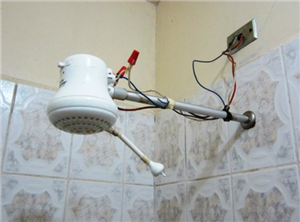I have been round to a relatives flat and seen he has an old Wylex board with MCBs. His bathroom has no supplementary bonding from what I can see and no RCD protection for his electric shower. how potentially dangerous is this? I know the circuits are fairly short and can see main bonding in place Can only really think if the R2 values are low enough touch voltages should end up being kept low?
